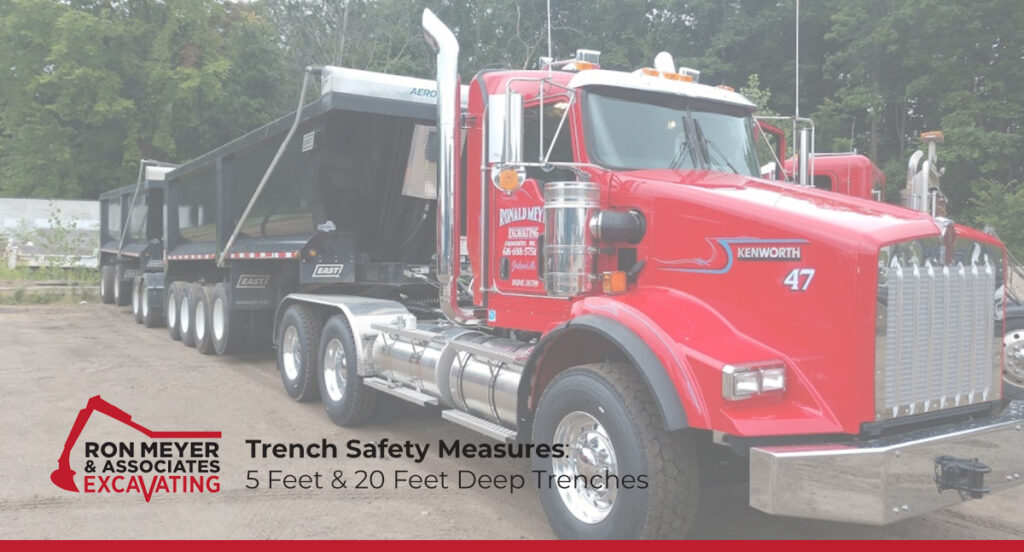
Trench collapses, or cave-ins, pose the greatest risk to workers’ lives. When done safely, trenching operations can reduce worker exposure to other potential hazards include falls, falling loads, hazardous atmospheres, and incidents involving mobile equipment.
Trenches 5 feet (1.5 meters) deep or greater
Trenches 5 feet (1.5 meters) deep or greater require a protective system unless the excavation is made entirely in stable rock. If less than 5 feet deep, a competent person may determine that a protective system is not required.
Trenches 20 feet (6.1 meters) deep or greater
Trenches 20 feet (6.1 meters) deep or greater require that the protective system be designed by a registered professional engineer or be based on tabulated data prepared and/or approved by a registered professional engineer in accordance with 1926.652(b) and (c).
For more information, see OSHA’s Trenching and Excavation Safety Fact Sheet.
At Ron Meyer & Associate Excavating, Inc, we’ve been providing underground and commercial construction to private and commercial businesses for 39 years. As the general contractor or subcontractor, our experienced foremen, equipment operators, pipe layers, truck drivers and well-maintained equipment fleet make us an undeniable choice for your excavating services. Let’s talk about your project!
Sources / References:
- https://www.osha.gov/sites/default/files/publications/trench_excavation_fs.pdf
- https://www.osha.gov/laws-regs/regulations/standardnumber/1926/1926.652

As 45 years of experience as an underground/site contactor and a third generation contractor, Ron takes time to go through each individual project with the supervisor and is responsible for all scheduling and equipment logistics. He’s also involved in all troubleshooting for projects.